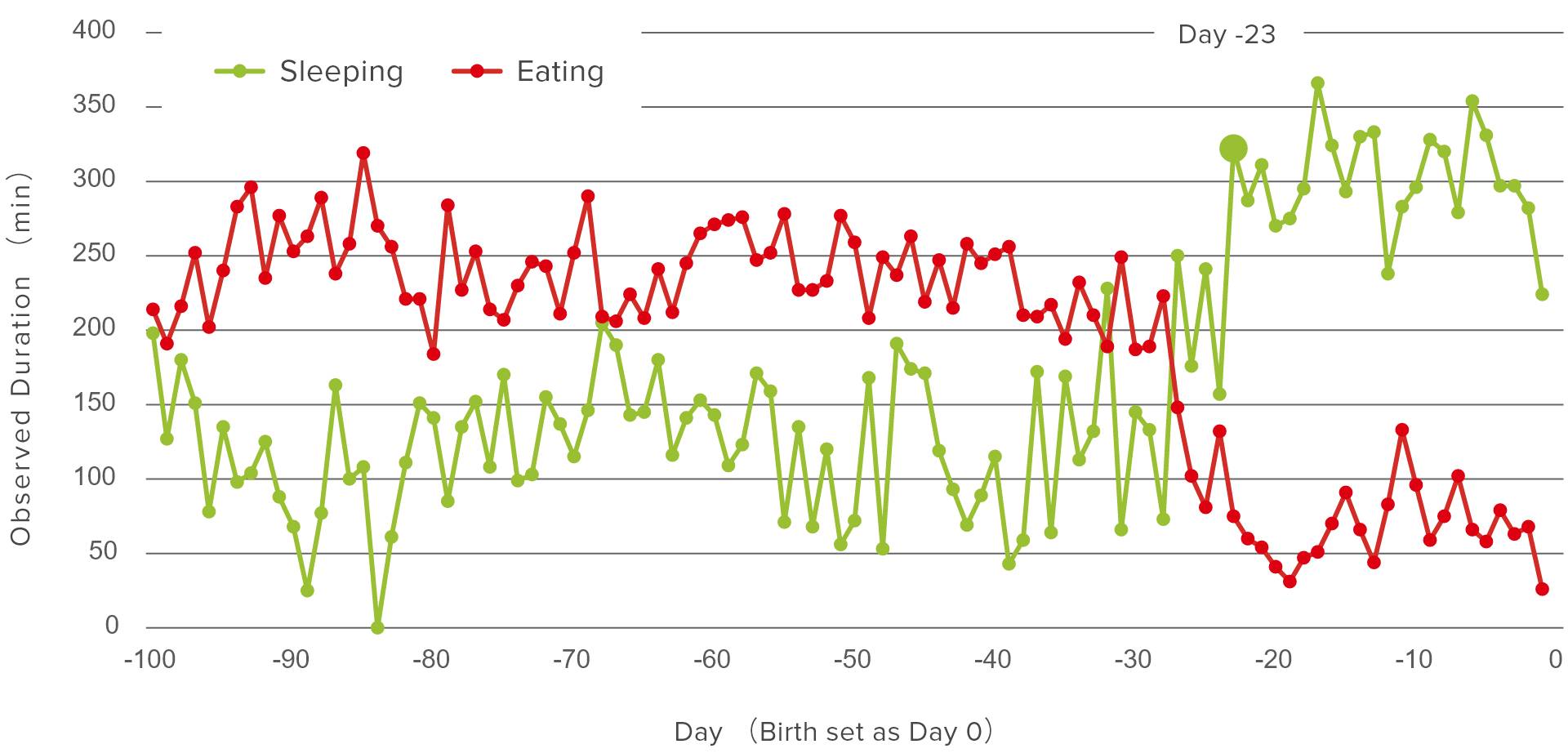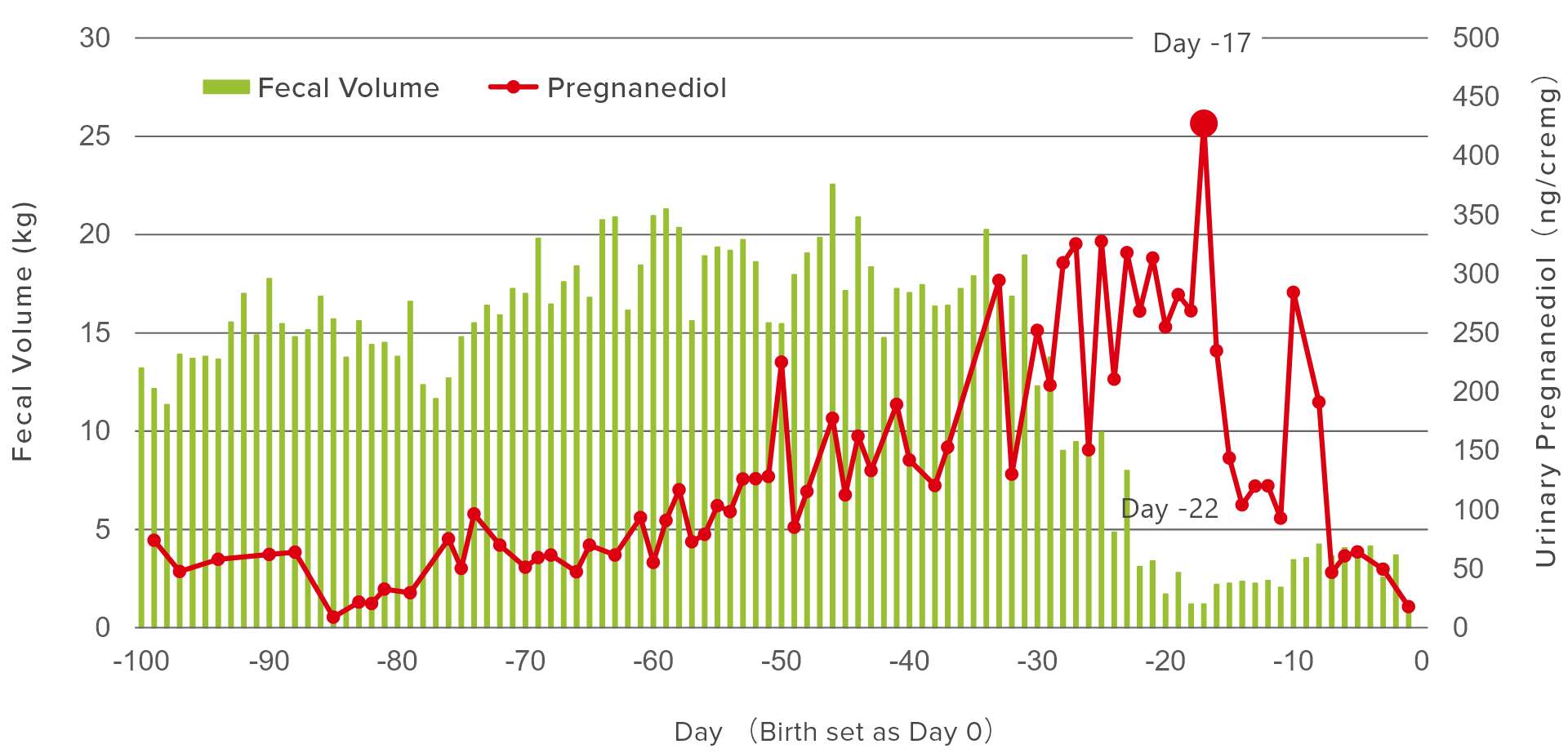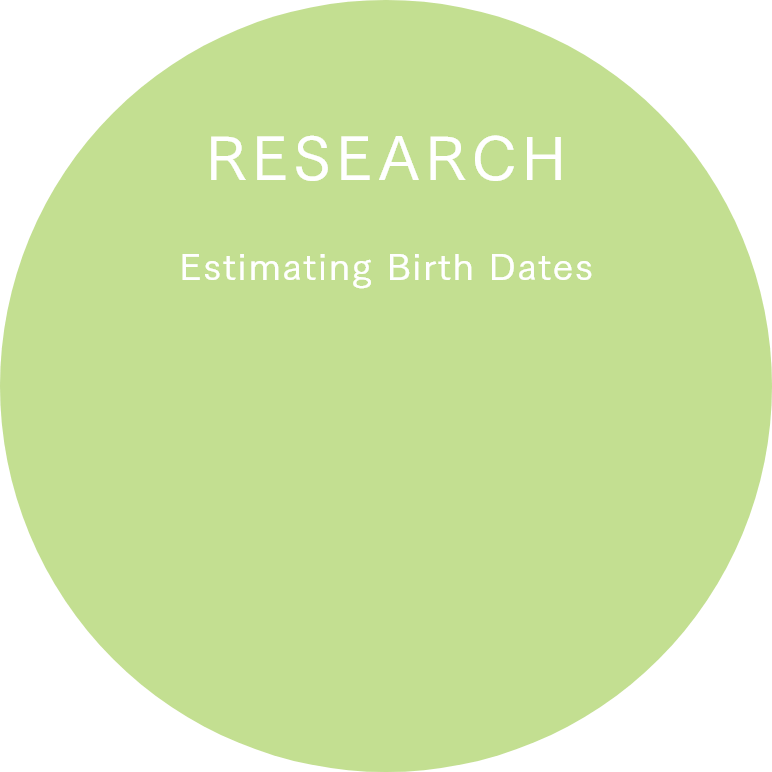

Estimating the date of birth is a crucial point in rearing management
The gestation period for giant pandas is believed to be three to five months. At this park, the shortest on our record was 93 days, while the longest was 163, showing a nearly two entire months’ difference. It has been found that the period can vary greatly among individuals. This is due to the unique reproductive mechanism in pandas known as delayed implantation.*
*Delayed implantation: A form of implantation observed in certain mammals. In this process, the embryo remains in a state of suspended dormancy until certain criteria are met, only when it continues on to implantation and placental formation. This is seen in relatives of bears, including pandas, and marsupials.
-
Gestation Periods
Mother: Meimei Mother: Rauhin Birth Year Gestation Period Birth Year Gestation Period 2000 103 days 2008 138 days 2001 93 days 2010 136 days 2003 109 days 2012 129 days 2005 139 days 2014 136 days 2006 117 days 2016 136 days 2018 128 days 2020 163 days Average 112 days Average 134 days Shortest 93 days Shortest 128 days Longest 139 days Longest 163 days -
Birth Estimation Table
Mother Birth Year Days from First Signs to Birth Decrease in fecal volume (less than 5kg) Urinary pregnanediol peak Continual increase in sleep duration Meimei 2000 24 20 26 2001 21 23 14 2003 21 22 24 2005 25 21 25 2006 22 22 23 Mean ± standard deviation 22.6±1.8 21.6±1.1 22.4±4.8 Rauhin 2008 21 20 31 2010 23 25 31 2012 23 27 31 2014 27 20 29 2016 22 21 27 2018 22 23 27 2020 21 17 23 Mean ± standard deviation 22.7±2.1 21.9±3.4 28.4±3.0 Meimei・Rauhin Mean ± standard deviation 22.7±1.9 21.8±2.6 25.9±4.8
From 2010 on, the survival rate of panda babies in captivity has soared to 88%. This is believed to be due to established rearing techniques for the mother and child during the first week after birth, when the risk of death is highest. Estimating the date of birth is a crucial point in rearing management for newly born cubs and their mothers. Here we utilize three primary indicators to estimate due dates based on our past experience.
- ① Dramatic decrease in fecal volume (5 kg)
- ② Urinary pregnanediol (in the form of PDG) peak
- ③ Continual increase in sleep duration
These indicators appear in the order of increased sleep duration, decrease in fecal volume, and urinary pregnanediol peak. The decrease in fecal volume is believed to be the most reliable sign, as there is minimal variation. At the park, after estimating the date of birth based on these three indicators, we then conclude that a female is about to give birth when she grows restless, her vulva looks swelling, and she is seen frequently licking it. The ability to predict the date of birth allows us to well in time arrange the environment for the mother to give birth and raise the baby.
Fluctuations in Time Spent on Sleeping / Eating
(before Rauhin gave birth in 2020)

Fluctuations in Fecal Volume and Urinary Pregnanediol
(before Rauhin gave birth in 2020)

